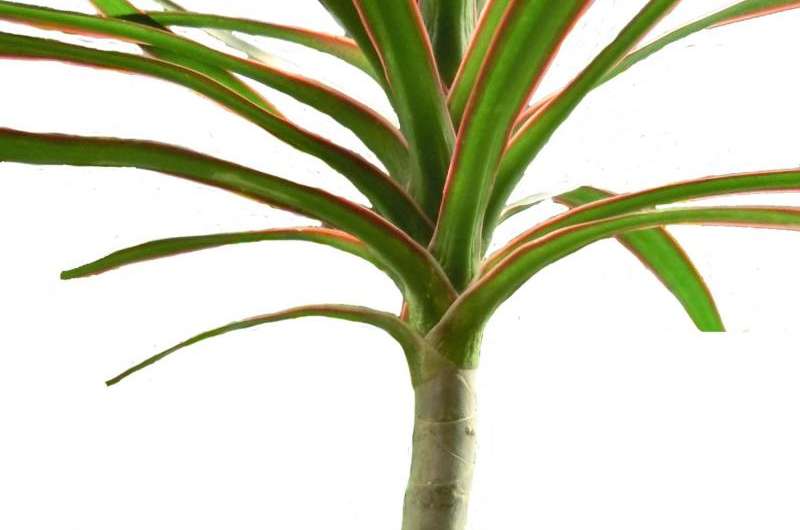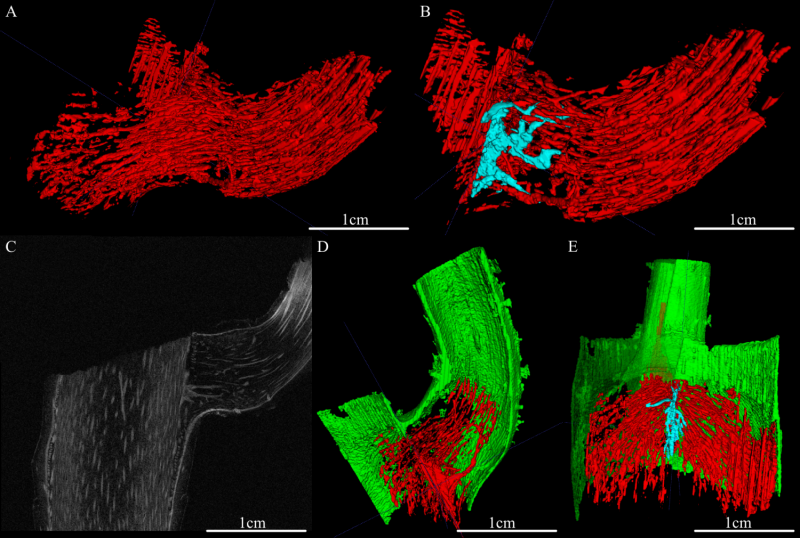The inside story: MRI imaging shows how plants can inspire new engineering materials

3-D imaging of plant branching structures is allowing researchers to see how exactly their internal tissues respond under stress, giving new insights into the design of potential new engineering materials, such as those used in aircraft and sports equipment.
Researchers from the Plant Biomechanics Group of the University of Freiburg, Germany, have developed a new method to visualize the junction between branches and stems in plants (plant ramifications). The method uses magnetic resonance imaging (MRI) to study how vascular tissue within the ramifications deforms under stress and strain. These ramifications can then be used as concept generators for branched, fibre-reinforced, lightweight materials in bicycles, cars airplanes and architecture.
"We wanted to assess the load-bearing capacity of the vascular tissues," says Linnea Hesse, one of the researchers involved in the study. "Now, for the first time, we can visualize load-induced deformations non-invasively within a living plant."
By comparing 3D-images of the arrangement of vascular bundles in unloaded and mechanically loaded ramifications, the researchers hope to understand the importance of bundles and other tissues in biomechanics, so that this method can be used to optimize branched, fibre-reinforced, lightweight components.
"The focus is on optimizing technical ramifications and thus product development in car, aircraft, windmill and sport device construction, as these profit from reduced weight and high load-bearing capacity", says Hesse.

Other visualization methods, which employ histological techniques or µCT, require extensive preparation and image-post-processing, as well as being invasive. Magnetic resonance imaging (MRI) helps to overcome these issues by allowing the workers to differentiate various plant tissues without damaging the plant (non-invasive) prior to or during image acquisition.
Further work is needed before the method can be fully implemented, but it is hoped that these methods will be useful not only for biomimicry or plant biomechanics but also for studying general plant biology.
More information: This work will be presented by Linnea Hesse (Plant Biomechanics Group, University of Freiburg, Germany) at the annual meeting of the Society for Experimental Biology (SEB) in Prague at 11:25 Tuesday 30th June 2015.
Provided by Society for Experimental Biology





















